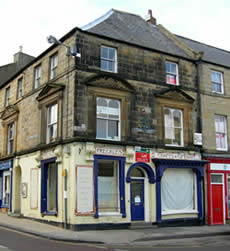Commercial Property Energy Certificates
Energy Certificates are required for all commercial premises sold, let or transferred throughout the United Kingdom.
The majority of Commercial buildings will be assessed using the Standard Building Energy Model (SBEM). This is also the method used to ensure compliance with building regulations for the thermal performance of new buildings.
The Energy Performance of Buildings Directive (EPBD) defines buildings in a very basic manner, as structures having walls and a roof, and within which energy is used to manage or control the environment.
In addition to shops, offices, workrooms, factories and the like, some farm buildings or other workshops may require an Energy Performance Certificate. It is also possible that parts of buildings will require a Certificate, for example the office accommodation within a larger, unheated warehouse facility.
A commercial enterprise may require several Certificates if more than one building is used. Equally, if a building is sub-divided into a number of units let to different tenants then each of these units will require an individual Energy Certificate (unless there is a common heating system serving the entire building – in which case a single certificate for the building will suffice).
If the enterprise includes one or more domestic buildings, these will require a domestic EPC. However in England, if a building includes a domestic element – for example a flat above a shop without independent external access – then a single Commercial Certificate will suffice. In Scotland domestic elements always require a separate domestic Energy Certificate.
Note also that in Scotland up to 50 square meters of a dwelling may be used for business purposes, and in such cases no Commercial Certificate is required. (The standard domestic Property Information Pack is required on the sale of such a property – even if it is marketed as a business, for example a small Guesthouse.)
The process of assessment for commercial premises is significantly more complex and time consuming than that required for dwellings. Access to accurate floor plans or architects drawings, together with design specifications for heating, hot water and lighting systems will expedite the production of the Certificate.
It is evident that energy performance levels may have a bearing on commercial property values, and in recognition of this Cheviot Surveys is prepared to offer a staged assessment so that owners may rectify defects, supply more detailed information, or improve performance before the Certificate is issued.




